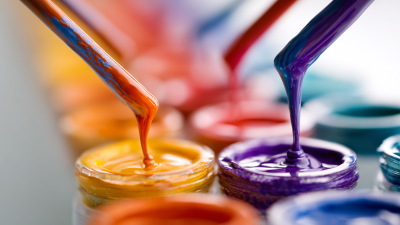In the world of DIY home projects, having the right tools and materials can make all the difference between a successful repair and a project gone wrong. Among the myriad of options available, one standout solution is Silicone Repair Glue. This versatile adhesive is designed to bond a wide variety of materials, delivering strength and flexibility that is particularly useful in home repairs. Whether you are looking to fix a broken ceramic vase, patch up a leaky pipe, or secure loose tiles, Silicone Repair Glue can handle it all.

Not only does this specialized glue offer excellent waterproof properties, but it also cures to form a strong, durable bond that can withstand different conditions, ensuring long-term results in your household fixes. This guide will delve into the many benefits and applications of Silicone Repair Glue, providing you with the essential knowledge to enhance your home maintenance skills. By understanding the unique features of this amazing adhesive, you'll be empowered to tackle a wide range of projects with confidence and ease.
Silicone repair glue is a versatile adhesive that can significantly enhance your home repair projects. There are several types of silicone repair glue available, including clear silicone, colored silicone, and specialized formulations like high-temperature or underwater silicone. Clear silicone is ideal for general repairs where aesthetics matter, as it dries transparent, making it almost invisible on surfaces. Colored silicone can be used when matching the glue to specific materials or surfaces, such as tiles or fixtures, is necessary. Moreover, specialized silicones offer unique benefits; for example, high-temperature silicone is perfect for repairing items exposed to heat, while underwater silicone is essential for fixing items in wet environments, such as pools or aquariums.
The benefits of using silicone repair glue extend beyond its versatility. This adhesive is known for its strong bond and flexibility, making it suitable for a variety of materials, including glass, metal, wood, and plastic. Unlike traditional adhesives, silicone retains its properties even in extreme temperatures and harsh conditions, ensuring long-lasting repairs. Additionally, silicone repair glue is waterproof, which adds to its durability and makes it an excellent choice for outdoor applications. Its ease of use and quick drying time make it a go-to option for DIY enthusiasts and professionals alike, helping to streamline various repair projects around the home.
| Type of Silicone Repair Glue | Common Uses | Advantages | Cure Time | Temperature Resistance |
|---|---|---|---|---|
| General Purpose Silicone | Household repairs, sealing gaps | Flexible, waterproof, easy to use | 24 hours | -58°F to 400°F |
| High-Temperature Silicone | Automotive applications, ovens | Withstands extreme heat, durable | 24 hours | -60°F to 600°F |
| Construction Silicone | Windows, doors, roofs | Strong adhesion, weather-resistant | 24-48 hours | -40°F to 180°F |
| Medical Silicone | Medical devices, prosthetics | Biocompatible, safe for skin | 24-72 hours | -60°F to 500°F |
When embarking on home projects with silicone repair glue, having the right tools is essential for achieving effective and lasting results. A recent report from the Adhesive and Sealant Council indicates that over 70% of DIY enthusiasts find their projects more successful when they are equipped with appropriate tools.
Critical tools include a caulking gun, which allows for precise application of silicone, and a utility knife to ensure clean and accurate cuts. Moreover, a set of assorted brushes can help smooth out the adhesive, ensuring that no gaps remain, which can compromise the bond strength.
Additionally, safety gear such as gloves and goggles should not be overlooked. According to the National Institute for Occupational Safety and Health (NIOSH), protective equipment can reduce the risk of irritation from fumes or skin contact with the adhesive. Furthermore, a well-organized workspace enhances efficiency, minimizing errors during the application process. The combination of the right tools and safety measures contributes significantly to the effectiveness of silicone repair glue, enabling homeowners to tackle various projects with confidence and skill.
Silicone repair glue is a versatile solution for a variety of home projects, renowned for its durability and flexibility. When applying silicone glue, follow these step-by-step techniques to ensure a successful bond.
Begin by thoroughly cleaning the surface area to remove any dirt, grease, or old adhesive. According to a report from the Adhesive and Sealant Council, proper surface preparation can increase adhesive strength by up to 50%. Once clean, cut the nozzle of the silicone tube to your desired bead size and apply it evenly along the surface. It’s crucial to work within the recommended application temperature range, typically between 40°F and 100°F, to enhance adhesion and curing.
After application, allow the silicone to cure undisturbed for at least 24 hours for maximum performance. The curing process can be affected by humidity and temperature; studies indicate that higher humidity can lead to faster curing times, making it essential to consider environmental conditions during your repair projects. For best results and longevity in repairs, choose a silicone adhesive rated for the specific materials you are working with, such as glass, metal, or plastic, as compatibility plays a vital role in the effectiveness of your repairs. With these techniques, you can confidently tackle a wide range of home repairs using silicone glue.
When using silicone repair glue for home projects, avoiding common mistakes can make a significant difference in the outcome. One frequent error is applying the glue to dirty or damp surfaces. For optimal adhesion, ensure that the area is clean and completely dry before beginning your repair. This will not only help the glue bond better but also improve its longevity.
Another common pitfall is using too much glue. Many people believe that applying a thick layer will ensure a stronger hold, but this can actually lead to messy results and longer curing times. Instead, use a small amount and apply it evenly, allowing the silicone to fill any gaps without excess oozing out.
**Tips:** Always read the specific instructions on your silicone repair glue tube, as different formulations may have unique requirements. Additionally, consider using painter’s tape to create clean lines around your repair area; this will help you achieve a professional-looking finish without excess glue spilling over onto unintended surfaces.
When it comes to achieving durable and effective repairs around the home, silicone repair glue stands out as a versatile solution. To ensure your repairs last, proper cleaning and maintenance are essential. According to a report by the Adhesives and Sealants Industry, approximately 80% of bond failures result from inadequate surface preparation. Therefore, before applying silicone glue, always clean the area thoroughly to remove dust, oils, or old adhesives, which can compromise adhesion.
**Tips for Cleaning**: Use a damp cloth and a mild detergent to wipe down the surfaces you plan to glue. For tougher residues, consider using isopropyl alcohol or vinegar. Once clean, allow the area to dry completely to provide the silicone repair glue with the best possible surface for bonding.
After your repairs have been made, maintaining the integrity of the silicone bond is key. A survey from the Home Improvement Research Institute indicates that regular maintenance can extend the lifespan of repairs by up to 50%. Regularly inspect the glued areas, and if you notice any signs of wear or degradation, address them promptly. Additionally, avoid exposing repaired surfaces to extreme temperatures or excessive moisture, as these factors can weaken the adhesive properties of silicone over time.






